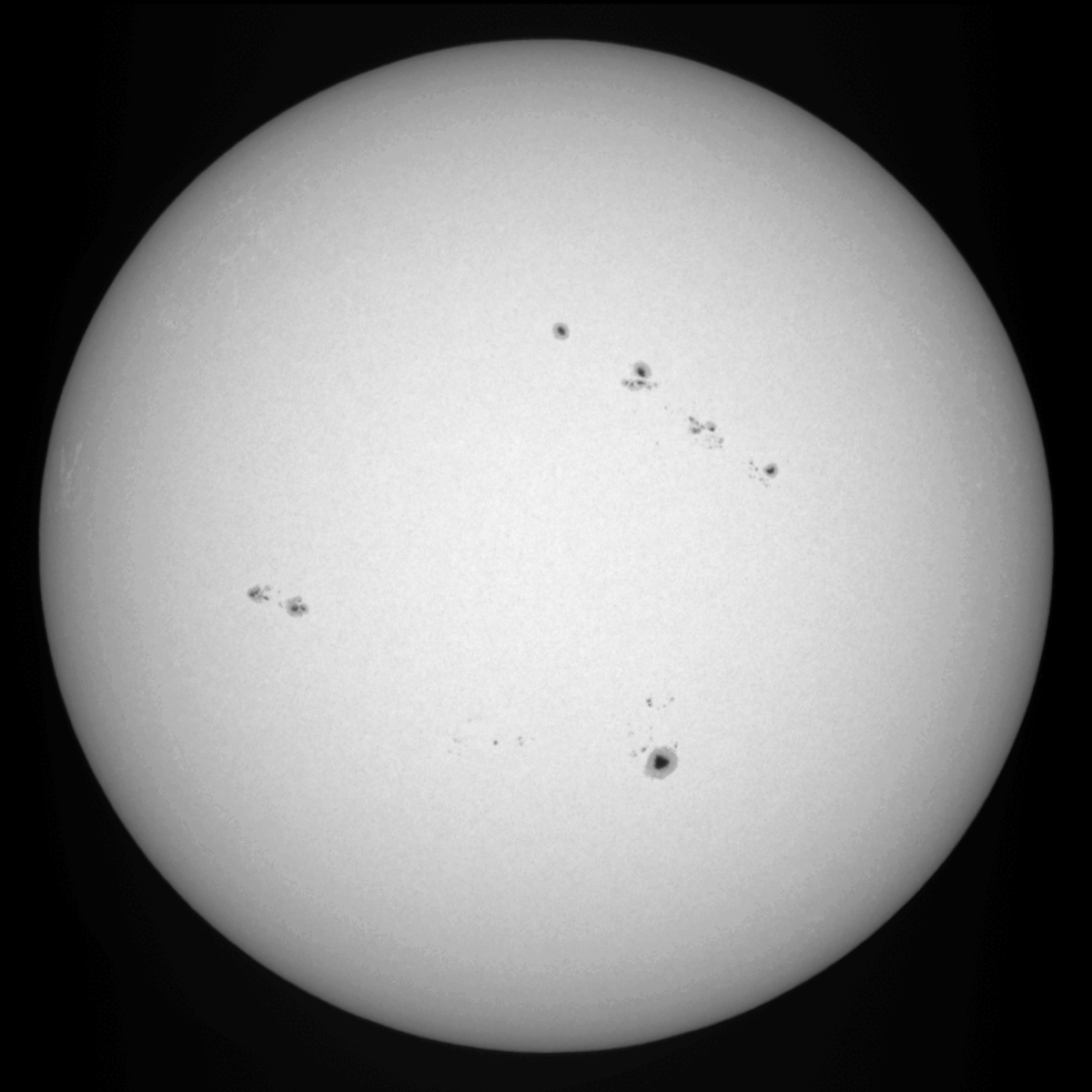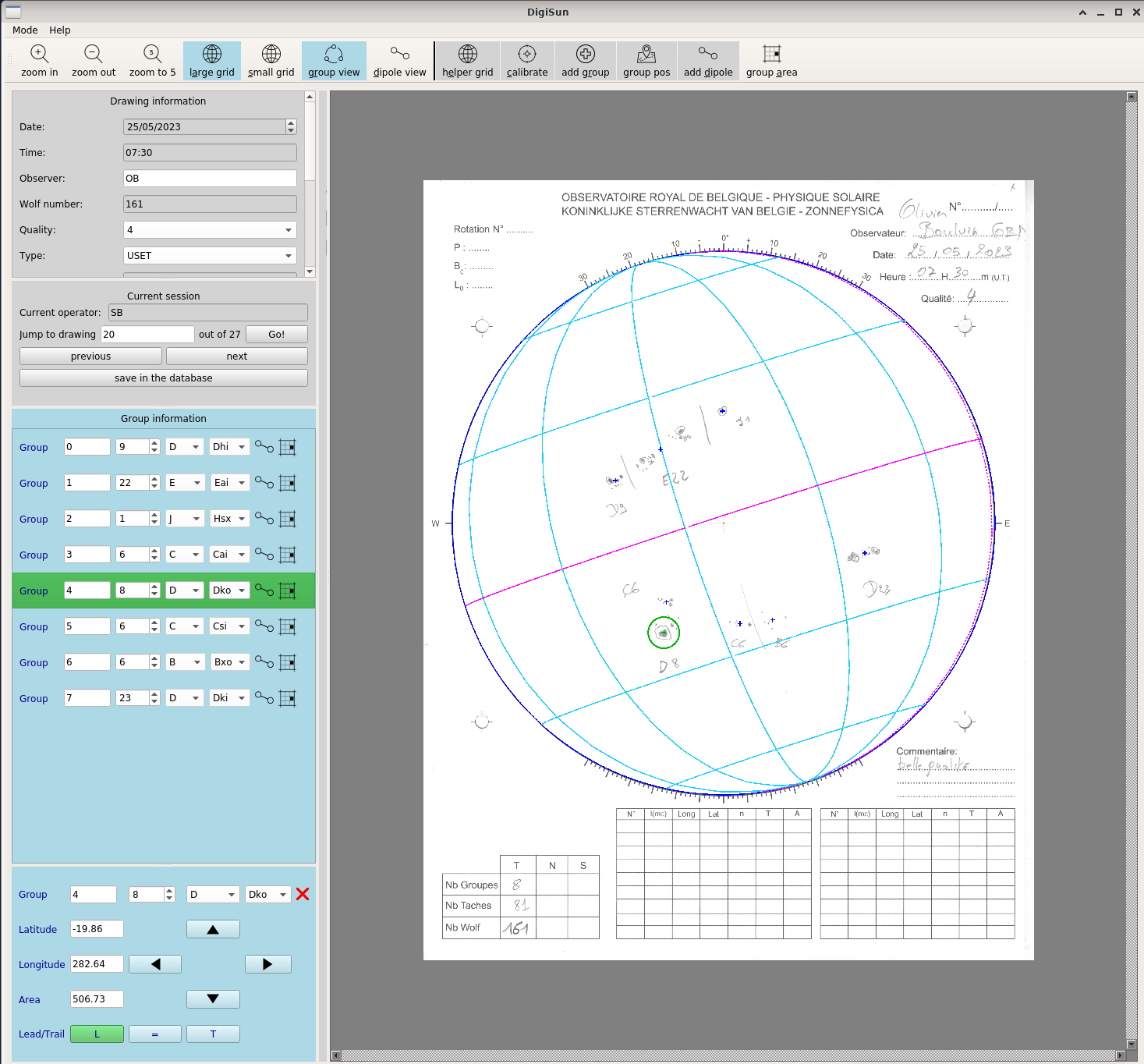There was quite the excitement last week in the USET team that makes ground-based solar observations . Not one, but two sunspot regions were visible with the naked eye!

The first group started its transit over the solar disk on May 19 and was a nice circular sunspot, with some smaller spots close by. This sunspot group can be seen at the lower right of the sun in the clip above, which loops USET observations from May 25 to May 27.
On May 25, the USET observer analysed this region using DigiSun, a software tool dedicated to scientific measurements of sunspots drawings. The application allows an operator to extract from a drawing the number of groups on the sun, their positions, the number of spots inside each group, their Zürich and McIntosh classifications, and their dipole tilt.
For this case, the observer measured an area of ~500 msh (see below; due to the projection by the telescope, the sun is mirrored in this drawing and the sunspot group is on the left).
msh means millionths of a solar hemisphere, with 167 msh corresponding to the total surface area of the Earth. This means that e.g. 300 msh concerns already quite a big sunspot, and there aren't that many during a solar cycle. According to McIntosh (1990), only 8% of all unipolar and bipolar sunspot groups contain a large sunspot (i.e. an area larger than 250 msh) at some point during their transit.

Later, on May 27th, a bipolar group takes center stage (crossing the central meridian at the end of the clip above), this time with a total area of ~ 980 msh. This was not a single sunspot, but a compact bipolar group and was therefore also visible with the naked eye.
Disclaimer: of course one should never look up at the sun with unprotected eyes. Keep your eclipse glasses close. With the ongoing rise in solar activity, we hope to report on more sunspot groups that you can see without a telescope!
Even more info on these observations can be found with the STCE.